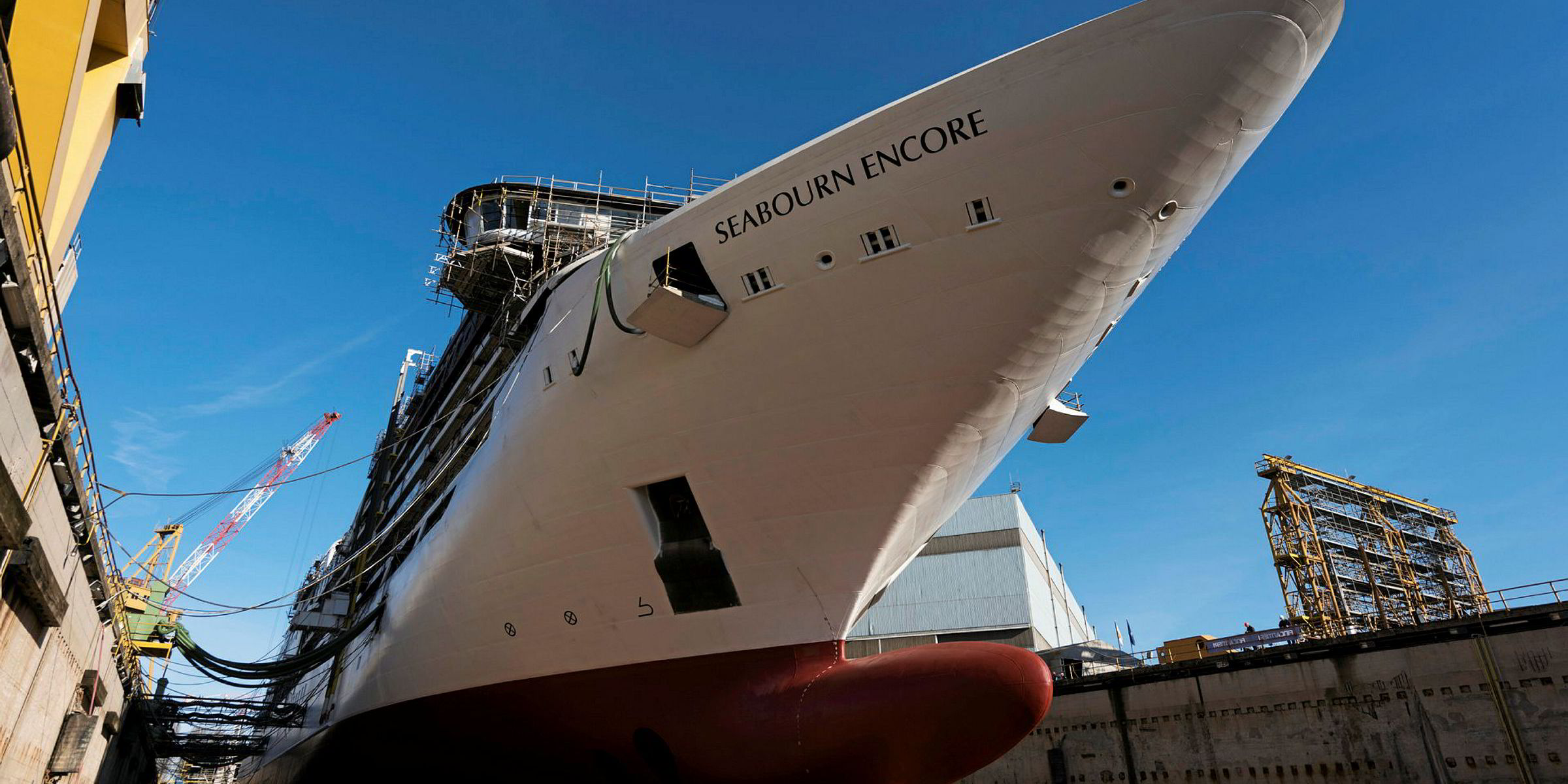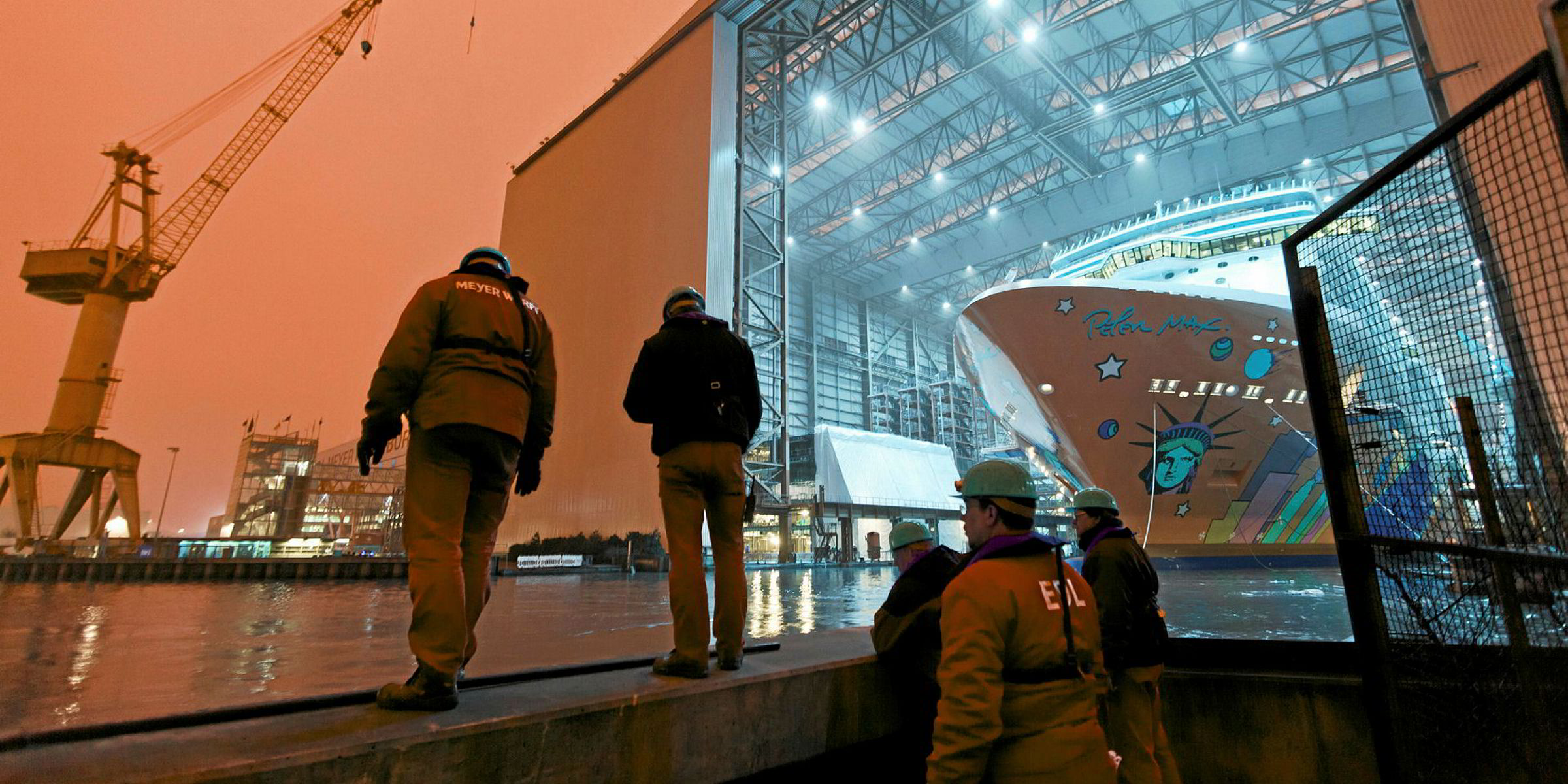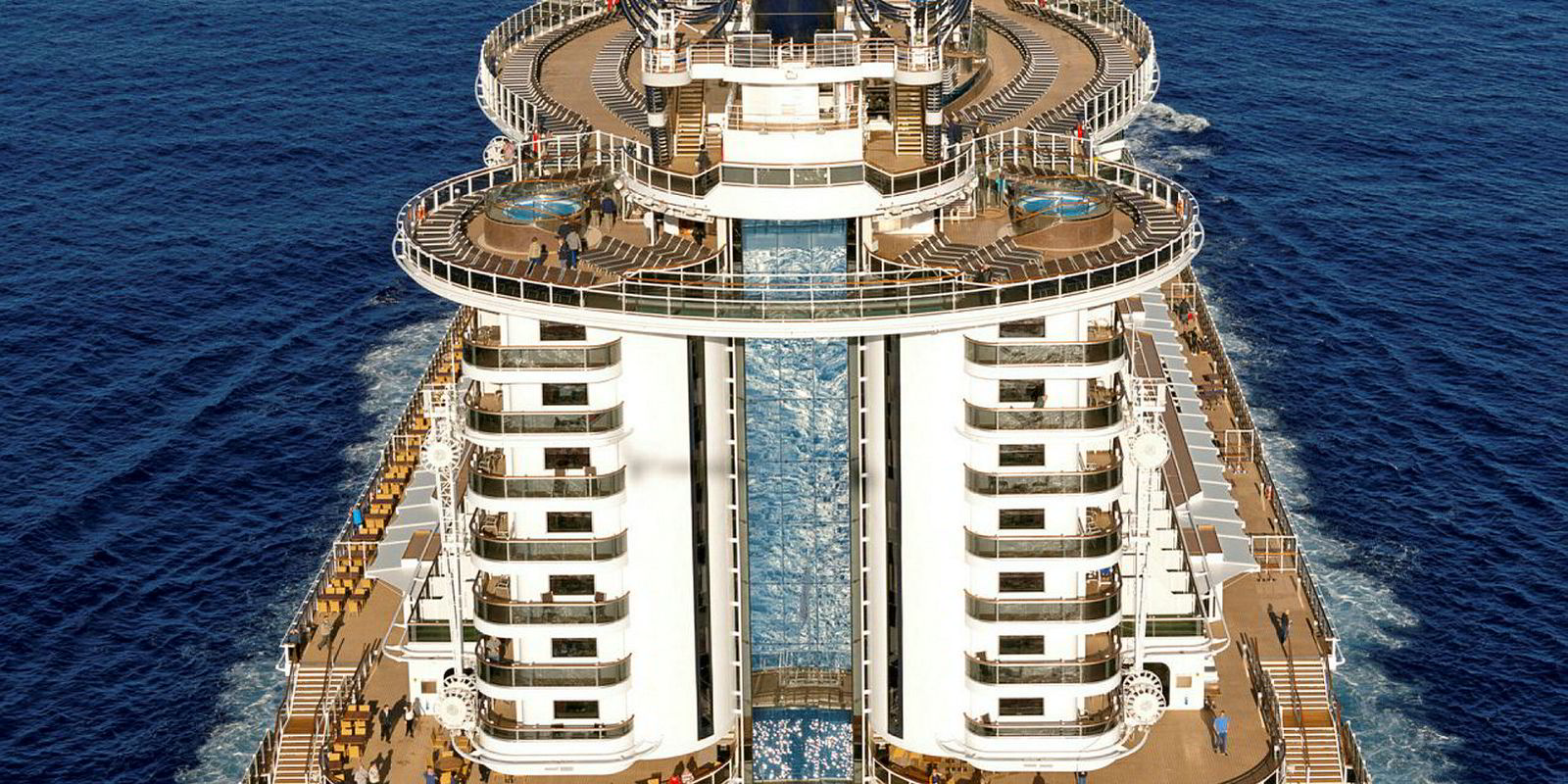Today’s large cruise newbuildings can be characterised as more evolutionary than revolutionary. The cruiseships being built today have little resemblance to ships constructed only 20 years ago.
Onboard facilities have changed to cater to modern lifestyles and the increasing need for operators to adapt to a new business model that requires an increasing proportion of revenue to be generated onboard the ship rather than from ticket sales.
This has led to ever-larger ships being built, not only for economies of scale, but also to accommodate more revenue-generating facilities that run the gamut from shopping malls and high-end dining venues to theme park-style water parks, ice rinks, and even submarines and extendable viewing platforms.
The cruise lines have also become the trendsetters for the use of LNG-powered ships, with an increasing proportion of cruiseships on order after 2020 featuring LNG-propulsion systems.

Despite the constant need for new innovations onboard, cruise lines show a strong preference for sticking with proven ship designs — they call them platforms — that are gradually tweaked and expanded upon with each successive order.
This is done to keep continuity in the fleet and simplify operational processes. It also helps to keep down building costs as it reduces the need for shipyards to retool each time they start constructing a new vessel.
New perks and use of LNG
Carnival Corp is bringing numerous innovations onboard its cruiseships and plans to incorporate use of LNG on future vessels in response to pending regulations.
But it is changing the customer experience too. Recent upgrades by the Miami-based cruise major include a trial use of what it calls the Ocean Medallion on Princess Cruises' Regal Princess. The medallion — a coin-sized electronic device — offers a multitude of services from the palm of one's hand, from making dinner plans to shopping on the ship, to keeping in touch with family members.
"Our goal is to continue increasing demand for cruise vacations, and we believe this will deliver an even more compelling guest experience that will generate even higher levels of guest satisfaction," Carnival says.

Other new perks include a microbrewery on the Carnival Horizon — set for delivery this year — as part of celebrity chef Guy Fieri's Guy's Pig & Anchor Bar-B-Que Smokehouse/Brewhouse. The ship will also feature the first Dr Seuss WaterWorks aqua park.
As previously reported, the company plans to take delivery of seven ships — to be powered by LNG in port and at sea — from Meyer Werft and Meyer Turku. The initiative is part of a programme that will take on a total of 18 new vessels by the end of 2022.
The LNG-powered parade of new ships will start with AIDA Cruises' AIDAnova late this year and continue with vessels for Carnival Cruise Line, P&O Cruises UK, AIDA and Costa Cruises.
Carnival says it will evaluate partial or full use of LNG power as it orders the other 11 ships across its brands.
"Because of the new regulations recently adopted by the IMO, there is a greater push in the industry today to build ships that can use cleaner burning fuel, such as LNG-powered ships," the company says.
In parts of the world where LNG is unavailable, Carnival plans to install exhaust gas cleaning systems — scrubbers — or use a cleaner fuel.
As far as its current fleet of 103 ships is concerned, Carnival says it plans to install scrubbers on those instead of converting them to LNG power. It has spent $400m putting them on 60 ships over the past four years.
"It's very difficult to retrofit LNG on existing cruiseships because of the tank and storage requirements," the company says.

Quiet on future designs
Carnival declines to give any specifics regarding future ship designs. In the past, the company has had a penchant for sticking with several tried-and-tested hull platforms that are adapted and modified for several of the company’s cruise brands.
The designs of these different platforms are evolutionary and their lineage can easily be traced back to preceding classes both in terms of design and facilities on offer. Often, new class designs are based on supersized versions of previous models.
While the majority of ships that Carnival is now building are of its 133,000-gt Vista Class platforms, it is moving up in size with a new 180,000-gt design, two of which have been ordered with the first delivery scheduled for 2020.
“We have not announced design features for our two new 180,000-[gross] ton, LNG-powered vessels — the largest Carnival Cruise Line ships ever constructed set to debut in 2020 and 2022 — but, rest assured, that the design will be groundbreaking while maintaining the highest standards of safety, engineering and safety,” Carnival says.




